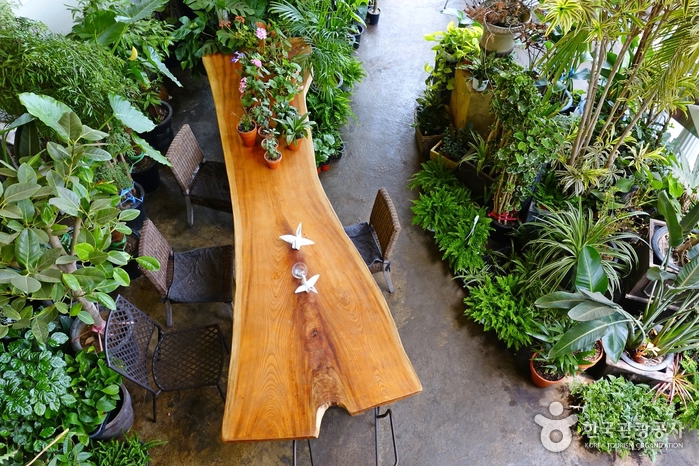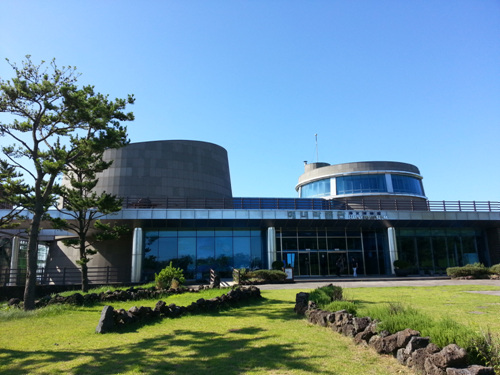Songdangnamu (송당나무)
Songdangnamu (송당나무)
 Songdangnamu is a gardening café where visitors can enjoy flowers in a spacious garden. Songdang-ri, known for its abundant rainfall, is recognized as a neighborhood conducive to plant growth, making it popular for landscaping cultivation. The café features a greenhouse filled with various plants such as herbs, palm trees, and catcus, as well as an outdoor garden spanning over 5,300 square meters. The signature menu item is the hallabong ade.
Songdangnamu is a gardening café where visitors can enjoy flowers in a spacious garden. Songdang-ri, known for its abundant rainfall, is recognized as a neighborhood conducive to plant growth, making it popular for landscaping cultivation. The café features a greenhouse filled with various plants such as herbs, palm trees, and catcus, as well as an outdoor garden spanning over 5,300 square meters. The signature menu item is the hallabong ade.
– Address : 68-140 Songdang 5-gil, Gujwa-eup, Jeju-si, Jeju-do
※ Presentation Information
– Main Dish
Hallabong ade
– Information and Guides
+82-10-9364-2819
– Menu
Americano, Tiramisu
– Opening Hours
10:00-18:00
– Parking
Available
– Day Off
N/A (Open all year round)

◎ Nearby Tourism Infobox
⊙ Maze Museum (메이즈랜드)
View detailed guide on Korea Trip Guide →
– Homepage
www.mazeland.co.kr
– Tel
+82-64-784-3838
Maze Museum, a comprehensive theme park, features the world’s longest stone maze, spanning 5.3 km and themed around Jeju’s Samda—the island’s iconic triad of stones, wind, and women. Proudly showcasing Korea’s natural beauty, the park also houses a museum where visitors can explore the history of mazes, view artifacts, and solve puzzles dating from the 14th century to modern times. Constructed from local stones known for their high far-infrared ray emission and the western arborvitae trees, which release beneficial phytoncides, Maze Museum is an eco-friendly park designed with health benefits in mind, offering more than just walking mazes. The site is enveloped by a variety of 40-year-old trees, providing an ideal environment for forest bathing and immersing in nature.
⊙ Bijarim Forest (비자림)
View detailed guide on Korea Trip Guide →

– Homepage
www.visitjeju.net
– Tel
+82-64-710-7912
Designated and protected as a Natural Monument, Bijarim Forest is home to 2,800 bija trees, ranging from 500 to 800 years in age, spread over 448,165㎡ land area. These majestic trees range from 7-14 meters in x_height, 50-110 centimeters in diameter, and 10-15 meters in crown x_width, so this forest is quite a rare example of its kind in the world. The berries of bija trees were used widely as a medicine used to kill parasites, while the wood was used to make premium furniture and go boards. Forest bathing in a bija forest helps to combat arteriosclerosis, mitigate physical and psychological fatigue, and restore the body’s rhythm.


![Olive Young – Seogwipo Gangjeong District Branch [Tax Refund Shop] (올리브영 서귀포강정지구)](https://ktrip.blogsailing.com/wp-content/uploads/2025/11/2887686_image2_1-1-20251124-030929.jpg)
![E-Mart – Jeju Branch [Tax Refund Shop] (이마트 제주)](https://ktrip.blogsailing.com/wp-content/uploads/2025/11/2887265_image2_1-1-20251124-024520-768x574.jpg)